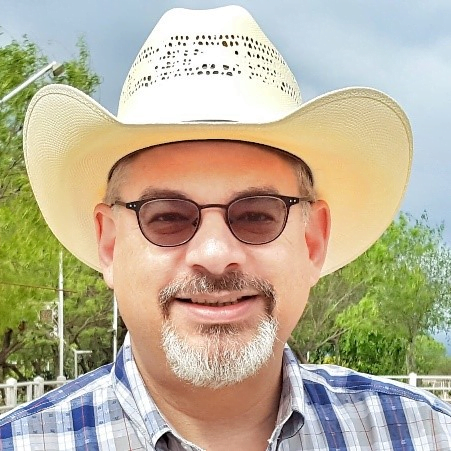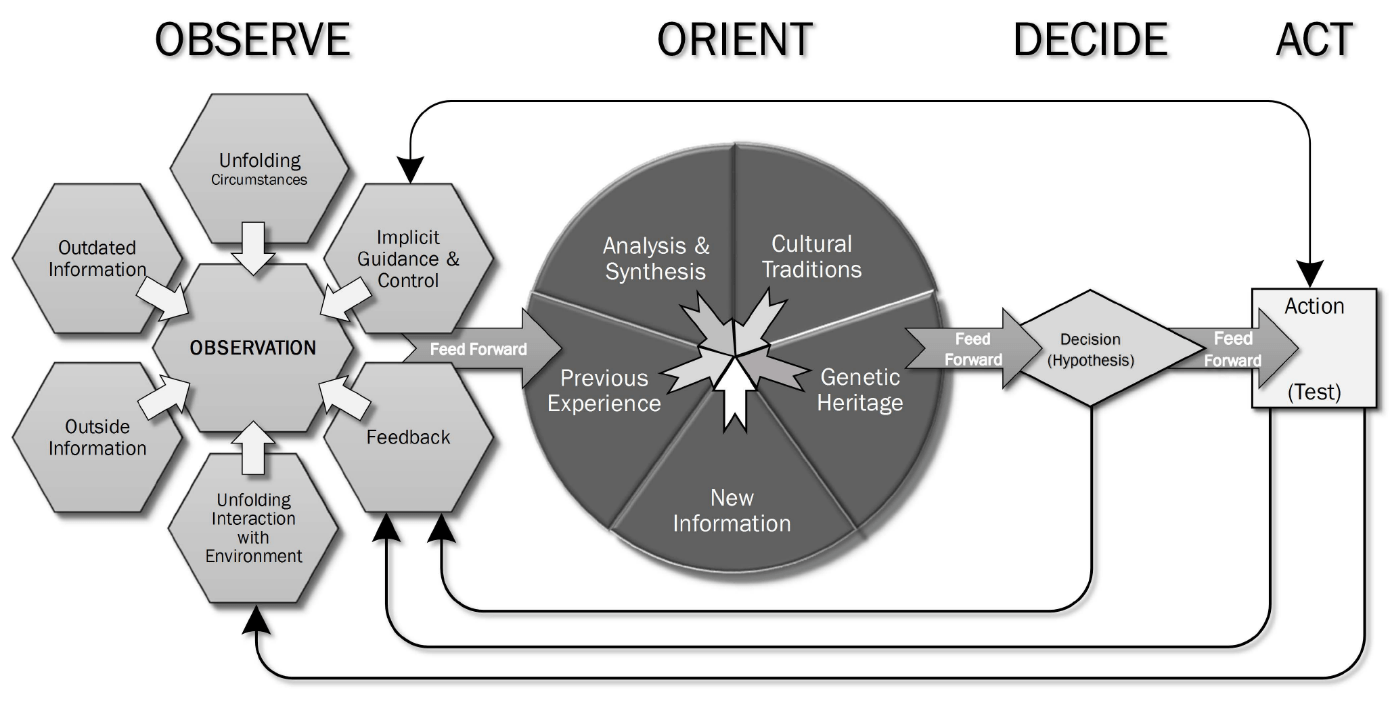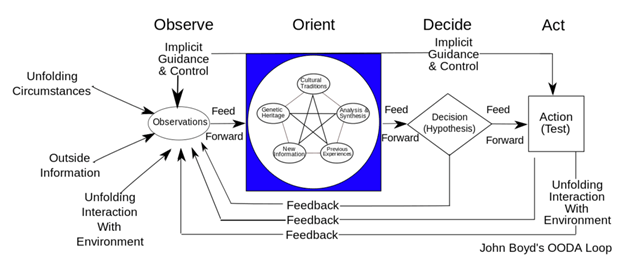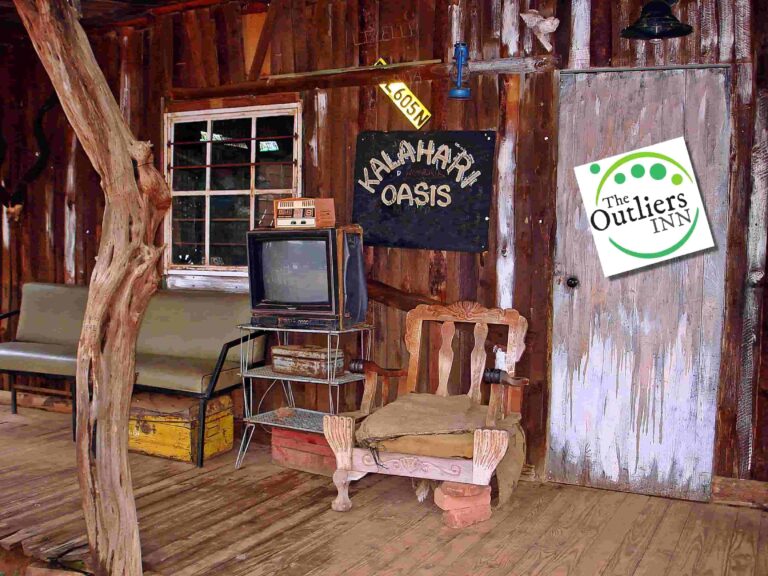The Antidote for VUCA is OODA
The date is September 15, 2008. The crisis in subprime mortgages had been going on for a little over a year. It was triggered in the last half of 2006 when house prices began to fall as the housing bubble in the United States burst. This caused those who had taken NINJA (No Income, No Job, or Assets) loans to buy their home, with the expectation that prices were going to increase five per-cent year on year forever, to default. This accelerated the decline in home prices which, in turn, accelerated the number of defaults – a financial and economic death spiral had formed.
But September 15, 2008 was different.
This is the day that Lehman Brothers, first founded in 1850 and the fourth largest investment bank in the United States, declared bankruptcy. This event instantly converted the crisis in subprime mortgages into a full-blown global financial crisis – thrusting the entire world into an environment where Volatility, Uncertainty, Complexity, and Ambiguity (VUCA) was pervasive.
The first use of the term VUCA is generally credited to the United States Army War College to describe the geopolitical situation after the collapse of the Soviet Union; where, prior to the collapse of the Soviet Union, countries were generally aligned to the United States or the Soviet Union (bringing a level of stability and predictability).
After the collapse of the Soviet Union, many countries decided there was no longer a need to be aligned to anyone since the need for being “protected” all but evaporated and the pressure on the United States to be engaged on the global scale abated. This breakdown of bipolar geopolitics left many weak countries without a benefactor – or direction. This was especially true of those countries that had little or no strategic value, such as Afghanistan and the middle-countries in Africa (Mali, Niger, Chad, Sudan and so on). Being weak, rudderless, and corrupt – where asymmetrical engagement is the norm – created the ideal conditions for VUCA to thrive.
That Lehman Brothers went bankrupt was not, in itself, a tragic event. Lehman’s assets ($639B) less liabilities ($613B) stood at $26B. A significant sum, to be sure. But insignificant on a national scale (the GDP in the United States is ~$15T) and on a global scale (a GWP of ~$78T). Of the $26B, only $1B was cash – and $1B in cash was not enough to remain solvent.
But Lehman’s failure – and that Lehman was allowed to fail and not rescued – created a VUCA environment. After all, these were already difficult economic times. And if Lehman can fail, who was next? Short-term, interbank loans valued in the billions of dollars – routinely performed the day before Lehman failed – came to an abrupt halt. Who was going to lend money when the risk of not being repaid was so great? Nobody.
Cash flow is the lubricant of the economic engine. Without it, the engine ceased.
But now what?
The availability of cash was not the issue. There was as much cash in the world the day before Lehman failed as the day after. It was a matter of deploying that cash quickly and decisively that was the challenge. But who would and could deploy cash necessary in such a VUCA environment? Certainly, the private sector had a duty to their shareholders first; they are prohibited from taking such a risk.
This left the task of rescuing the world economy to the public sector – the governments of the world.
And “time” was the enemy.
The main economic powers of the time, and those most effected by the Great Recession, were the United States and the countries of the European Union. But the differences in the way the leadership of both of these economies engaged the challenge are stark.
The United States recognized the urgency of the matter and the responses and rate of decision-making immediately went into hyperdrive. The series of major engagements to battle the financial crisis are detailed below.
- On October 3rd, 2008; Just over two-weeks after Lehman declared bankruptcy, Congress passed, and President G.W. Bush signed into law the Emergency Economic Stabilization Act of 2008, which authorized the United States Treasury to spend up to $700B – funding the Troubled Asset Relief Program (TARP) – to backstop financial institutions. In essence, the United States government became lender of last resort – guaranteeing the loans. (Note: Of the $700B authorized, only $426B was dispersed. And when the program ended, the United States Treasury made a $15B profit.)
- On October 8th, 2008; The Federal Reserve lowered its Feds Fund Rate from 2.00% to 1.50%, going to near 0.00% on December 16th, 2008 – where it would remain until December 17th, 2015.
- On November 25, 2008; The Federal Reserve announced it would purchase up to $600B in Mortgage Backed Securities (increasing to $1,350B on March 18, 2009) and $300B in Treasury Securities. This program became known as “Quantitative Easing”.
- On December 19th, 2008; President G.W. Bush, by Executive Order, declared that TARP funds may be spent on any program he personally deemed necessary to avert the financial crisis. He used this order to bailout the United States automotive industry, loaning billions to General Motors and Chrysler (even so, both companies would seek bankruptcy protection in 2009). Although offered, Ford declined to take any government funds.
- On November 3rd, 2010; The Federal Reserve announced it would purchase up to $600B in longer-dated Treasury Securities at a rate of $75B per month. This program became known as “QE2”. With the panic of the crisis abated but not completely resolved, QE2 was designed to stabilize the economy and put it on a path to sustainable growth.
- On September 21st, 2011; The Federal Reserve announced “Operation Twist”, which was a plan to purchase $400B (increasing by $267B in 2012) of bonds with maturities of 6 to 30 years and sell bonds with maturities of less than 3 years. The net effect was a change in the maturity of the bonds, but no net effect on the overall debt carried.
- On September 13th, 2012; The Federal Reserve announced a third-round of Quantitative Easing (QE3) which was an open-ended commitment to purchase up to $40B of Mortgage Backed Securities until the labor market improved “substantially”.
(1) John Richard Boyd, a colonel in the United States Air Force, is credited with developing a decision-making model for gaining the advantage during aerial combat based on an iterative four-stage cyclical process: Observe, Orient, Decide, and Act (OODA loop). The premise and strength behind the OODA loop is the assumption that time is the dominant factor in engagement and decisions need to be made from imperfect data. The pilot who can engage the OODA loop in the shortest amount of time will have the advantage and will likely be victorious, because the opposition will be caught responding to circumstances that have already changed.
A Strategy Research Project entitled “A Symbiotic Relationship: The OODA Loop, Intuition, and Strategic Thought” written in 2013 by Lt. Col. Jeffrey N. Rule, USMC for the United States Army War College elaborated further on Boyd’s OODA loop be formalizing the notion that there is a connection between the conscious and the subconscious – and that the better trained an individual is, the better prepared they are to engage, with iterative decisions being driven faster from the subconscious.
The European Union response was very timid and much slower – even feeble. It could be summed up as; too little, too late. A major reason for the weak engagement is the structure of the EU itself. Where the United States has a central Treasury to lead the countries fiscal policy, there is no EU counterpart with as much authority. Each member country of the EU has its own Treasury – each with its own policies which are formed in the best interest of the country first. Getting the countries to work together is largely like herding cats. If they happen to get unified (a big “if”) it will take a lot of time and the likelihood for a mediocre plan (one which will satisfy everyone, but is not decisive) is great.
- In March and July of 2008; The European Central Bank (ECB) ramped-up its already existing Long Term Refinancing Operations (LTRO) and raised €128B.
- On May 9th, 2010; Almost 2.5years after Lehman failed, the EU passes the “European Financial Stability Facility” (EFSF), with the combined contributions of all EU countries being €780B. The purpose of the EFSF is to “safeguard the financial stability in Europe by providing financial assistance to Eurozone countries in distress.
- On January 5th, 2011; The EU creates the European Financial Stabilization Mechanism (EFSM) which was an emergency funding program in addition to the EFSF and authorized to €60B. Unlike the program in the United States, the EFSM relied on financial markets to raise the funds, but was guaranteed by the European Commission using the budget of the European Union as collateral.
- On December 22nd, 2011; The ECB, under its LTRO mechanism and constructed similar to the Quantitative Easing occurring in the United States, infused an additional €489B to banks which were under stress with the vast majority (€325B) going to banks in Greece, Ireland, Italy, and Spain.
- On February 29, 2012; The ECB held launched LTRO2 raising an additional €530B, but the net new borrowing was €313B with the remainder being debt roll-over from previous programs.
- In July of 2012; The European Stability Mechanism (ESM) was formed as a permanent funding program and absorbed the EFSF and the EFSM.
Where the United States was focused on bailing out banks, the EU also had to contend with bailing out countries – which, in turn, bailed out the failed banks within those countries.
The European Central Bank (ECB), thinking that the Financial Crisis was largely confined to the United States, reacted very slowly – beginning the lowering of its interest rates a year after the Federal Reserve started to lower its interest rates. And while the Federal Reserve drove interest rates to near 0.00% by December of 2008, the ECB was not nearly as aggressive, maintaining an interest rate of 1.00% from Q2 of 2009 to Q2 of 2011 – when the ECB actually increased interest rates to 1.50% before realizing the mistake and starting the drive to 0.00% in Q3 of 2011 and reaching 0.00% in 2014.
VUCA
That the notion of VUCA was conceived in military undertakings is no surprise. We have all heard of the “fog of war”, referring to the vagueness and uncertainty experienced in battle; and that “no plan survives first contact with the enemy” from Helmuth van Moltke in the 19th century. These are both references to VUCA before the term VUCA existed.
But the pace of world we live in today would make van Moltke’s head spin. Business factors change on a massive scale is short periods of time. Consider that Social Media didn’t exist until a 2004 (with the founding of Facebook) and the “sharing” and “gig” economies were not the disruptive forces they are today – Uber was founded in 2009.
The ripple effect of a simple “Tweet” can send markets reeling around the world. Someone thinks the price of Bitcoin is going to go to Mars, and sure enough the frenzy makes it a self-fulfilling prophecy (until someone else says it’s going to crater). Or the guy on the weather channel says it’s going to snow – and we rush in a panic to get milk in bread (like we can’t survive for a few days without it). <embed this video with paragraph wrap-around>
https://youtu.be/i6zaVYWLTkU
The news and impact of geopolitical happenings can cause governments around the world to rethink their strategies and alliances. Take Brexit, for example; even though a deal has supposedly been agreed, there is enough ambiguity in the details that the final form is far less than clear.
Be it advances in technology, materials, or healthcare (we can now manipulate individual chromosomes to get them to behave differently), changes in technology are occurring so rapidly that the next thing is obsolete even as its announced. Where rocket technology was once the sole purview of governments, now seemingly any billionaire can build and launch a rocket.
And the advent of social media has resulted in people being connected at the speed of thought (and disconnected just as quickly). We are bombarded with so much information that it’s nearly impossible to squelch-out what is unimportant from what is important – and what is real and what is fake.
In most cases, we cannot be certain, we can only make an educated guess.
I found the following chart on the Harvard Business Review and thought it a rather clear and concise illustration of the components of VUCA including; the characteristics of each component, an example, and an approach (or suggested counter-measure to consider).
That we recognize we live in an environment where VUCA is the norm rather than the exception is a good first step. But a problem without a solution remains a problem. How can we prepare for, and engage in, situations when the ways and circumstances in which they manifest themselves are unpredictable?
OODA(1)
In any engagement, speed is an advantage: speed in identifying an opportunity or threat, speed in formulating an action plan, speed in executing the action plan, speed in reacting to the changing dynamics during the execution phase, and speed in deciding to disengage when you are at an irrecoverable disadvantage (and knowing when that is). Paralysis by analysis will almost certainly precipitate a less than stellar result or even doom. Therefore, the key to success in an engagement will be you and your company’s execution of the OODA loop quicker than the opposition or, in the case of business, the competition. And this will require an aggressive regimen of learning, practice, and application of the necessary skills—beyond those of your competitor—which will tilt the odds of success considerably in your favor. To maintain this edge, continual evaluation and revision of our strategies and tactics are crucial as technologies, conditions, capabilities, and circumstances evolve.
Let’s examine the stages of the OODA loop in greater detail.
Stage-1, Observe: The loop begins with observation. You must focus on external parameters and quickly filter what is important from what is not. T his is your data collection stage. At this point, all of your senses should be heightened as you seek and absorb and evaluate all manner and forms of data. The more data you can collect, the more accurate your insight will be and the faster it can be absorbed and evaluated. Ask yourself the following questions:
- How might this primordial soup of data affect me?
- What’s happening that directly affects me?
- What’s happening that indirectly affects me?
- What’s happening that may have lingering affects later?
- What circumstances are developing?
- What are the present conditions?
Stage-2, Orient: Orienting is taking what you observe and formulating an approach. You analyze the data collected in the Observe stage and focus on your business’s internal condition and capabilities to assess your current reality. This is how you interpret a situation in advance of making a decision. Boyd recognized five main influences in transforming data into information:
- Cultural traditions
- Genetic heritage
- The ability to analyze and synthesize
- Previous experience
- New information coming in
The objective here is to increase the velocity and effectiveness of your movement through the OODA loop to arrive at a decision. This process is iterative; as you observe additional information, you will need to evaluate the impact with a balance of speed and accuracy and update your orientation accordingly.
Stage-3, Decide: Next, you must determine a course of action. Always keep in mind that, even if you have all the data in the world, decisions do not guarantee success; they’re just best guesses. Success or failure will be based on your capabilities, your experience, and the quality of your observations and orientation. Decisions are rather dynamic in nature and should be considered fluid works in progress. For every trip around the OODA loop, new data will be transformed into new information, driving new suggestions, creating opportunities to modify your decisions and to drive subsequent actions. Remember that a decision does not require you go with either plan A or plan B; discontinuing the determination is also a valid decision.
Stage-4, Act: The final stage in your trip around the OODA loop will be to execute your decision. Then, you immediately cycle back to the Observe stage after you evaluate the outcome. Making a decision and taking action will have an impact on the data you have observed, which drives the information you’ve created and influences the decisions you have made.
The loop perpetuates until the opportunity is fully resolved by either completion or disengagement.
Remember; Time is the enemy of the 21st Century company.
Therefore, the competitive advantage will go to the companies that are in a State of Readiness for the unexpected and; can see further beyond the horizon then their competition; be able to recognize opportunities and threats sooner; can devise and deploy decisive engagements of those opportunities and threats more quickly; and be capable of making adjustments in real-time as circumstances unfold.
Not just see further and detect sooner, but decide and act faster.
This means, they will have to make decisions more quickly and more boldly—often synthesizing a course of action from incomplete data.
The keys to success here are having an organizational design that is built for speed—nimble, capable, and decisive—and investing in talent. Not just hiring and retaining the best, which will be increasingly more difficult as the competition for talent in the talent pool becomes tighter. But investing in those who are already working within your organization so that they can be the best they can be and drive value throughout organizations.
After all, you can’t be a high-performance organization without having high-performance teams who are made-up of high-performance individuals. And with these, you will be much more likely to successfully engage in a VUCA environment.
- Paris, Joseph F Jr. State of Readiness; Operational Excellence as Precursor to Becoming a High-Performance Organization, Page 123. Austin, Texas: Greenleaf, 2017.
- Paris, Joseph F Jr. State of Readiness; Operational Excellence as Precursor to Becoming a High-Performance Organization, Pages 123-128. Pages Austin, Texas: Greenleaf, 2017.
by Joseph Paris
 Paris is the Founder and Chairman of the XONITEK Group of Companies; an international management consultancy firm specializing in all disciplines related to Operational Excellence, the continuous and deliberate improvement of company performance AND the circumstances of those who work there – to pursue “Operational Excellence by Design” and not by coincidence.
Paris is the Founder and Chairman of the XONITEK Group of Companies; an international management consultancy firm specializing in all disciplines related to Operational Excellence, the continuous and deliberate improvement of company performance AND the circumstances of those who work there – to pursue “Operational Excellence by Design” and not by coincidence.
He is also the Founder of the Operational Excellence Society, with hundreds of members and several Chapters located around the world, as well as the Owner of the Operational Excellence Group on Linked-In, with over 60,000 members. Connect with him on LinkedIn or find out more about him here: www.JosephParis.me/card








